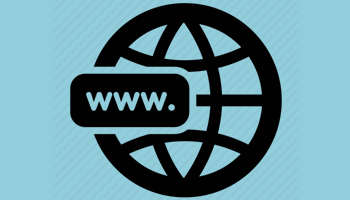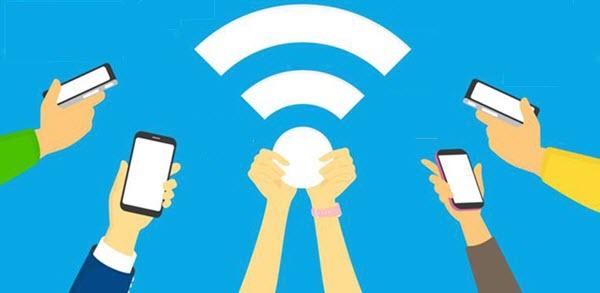The internet turns 52 this year and, to celebrate more than 50 years of the invisible information superhighway, here is a list of pivotal moments. Please feel free to mention, in the comments below, any events you think should have made the list.
- 1969 ARPANET – Birth of the Internet
Largely regarded as the foundation on which the modern internet is built, the U.S. Defense Department’s Advanced Research Projects Agency Network (ARPANET) is used to send the very first computer-to-computer message from UCLA to Stanford. Student Charles Kline sent the message “LOGIN” but only the first two letters “LO” got through before the system crashed.
- 1971 First Computer Virus Hits
Bob Thomas at BBN writes the self-replicating program Creeper, the first computer worm. The program was not regarded as actively malicious as it caused no real damage and merely displayed a message reading “I’m the creeper: catch me if you can“. It was eventually wiped out by Reaper – the first antivirus software — created by Ray Tomlinson to move across the ARPANET and delete the transmitting Creeper program.
- 1981 Hayes Smartmodem Revolution
Hayes Smartmoden takes the computer world by storm. The Smartmoden allowed for the interconnection of thousands of computer enthusiasts, a number that was considered staggering at the time, through online bulletin board services (BBS) and online user networks (Usenets). The Hayes Smartmodem was a huge step in the evolution of modems.
- 1985 The First Domain Name is Registered
Symbolics, a now-defunct computer manufacturer, registers the first domain (symbolics.com) on March 15, 1985. Since then, over 366 million domain names have been registered.
- 1989 Start of the World Wide Web
Tim Berners-Lee, a British scientist working at CERN, invents the “World Wide Web”. He considered several names, including Information Mesh, The Information Mine or Mine of Information but, thankfully, settled on World Wide Web
- 1990 Online Surfing Gets Easier
Archie, the first internet search engine is written by Alan Emtage, then a postgraduate student at McGill University in Montreal, Canada. The name is derived from the word “archive” minus the v. Interestingly, even though Emtage insisted that the name had nothing to do with the Archie comics, other early Internet search technologies such as Jughead and Veronica were subsequently named after characters from the comics.
- 1993 First Livestream
The subject of the world’s first live stream is a coffee pot, yes a coffee pot. Known as the Trojan Room Coffee Pot and located in the lab at the University of Cambridge, the coffee pot became famous as the first online webcam stream and, amazingly, attracted over two million viewers. That’s over two million people watching a coffee pot… the mind boggles.
- 1994 Netscape Arrives
Netscape Navigator isn’t the first web browser to introduce a graphical interface but it is certainly the first to be used on a massive scale. Netscape is an instant success and absolutely dominates the web browser market until challenged and eventually vanquished by Microsoft’s Internet Explorer during the first and original browser war. After losing out badly to Internet Explorer, Netscape formed the Mozilla Foundation and developed the Firefox web browser.
- 1994 First Online Order
The first online order is placed when Dan Kohn, a 21-year-old entrepreneur who ran a website based in New Hampshire called NetMarket, sold a CD of Sting’s Ten Summoner’s Tales album to a friend in Philadelphia, who used his credit card to spend $12.48, plus shipping costs, in a transaction that, for the first time ever, was protected by encryption technology: Attention Shoppers: Internet is Open
- 1998 Google Gets Serious
Co-founder of Sun Microsystems, Andy Bechtolsheim cuts Google a $100,000 cheque. He was the first outside investor in the search giant which, at the time, wasn’t even a legal entity. Two weeks later it was (as Google Technology Inc) and the rest, as they say, is history.
- 2001 Wikipedia Opens to the World
Wikipedia goes live with its first edit on January 15, 2001. With over six million articles in English and more than 55 million overall, Wikipedia becomes among the most visited websites in the world and one of the first places people check for various kinds of information.
- 2003 WordPress Expands Blogging
WordPress is launched as a fork of the B2/cafelog. Originally created as a platform for publishing blogs, more than 60 million websites now use WordPress, including 39% of the top 10 million websites as at January 2021.
- 2004 Facebook Likes & Friends
Mark Zuckerberg launches Facebook in college. Two years later, Facebook opens to all comers (over the age of 13). Love it or hate it, Facebook started the social media revolution and forever changed the way in which people share, communicate, and interact.
- 2007 Apple Reinvents the Phone
Apple CEO, Steve Jobs, introduces the iPhone (1st Gen / AKA 2G), a revolutionary product that changes the way smartphones look and work. Thousands queued to get their hands on the first iPhone and today over 90% of all internet traffic is conducted via mobile.
- 2014 Tim Berners-Lee Calls For Online Privacy
Founding father, Tim Berners-Lee, calls for an internet bill of rights to protect web users’ privacy and freedom of speech. “The web has come under increasing attack from governments and corporate influence and new rules are needed to protect the open, neutral system,” he warns. “So I want to use the 25th anniversary for us all to do that, to take the web back into our own hands and define the web we want for the next 25 years.” Words that, apparently, fell on deaf ears.
Today:
There is no doubt that the Internet has changed the way in which we live, work, play, and even speak– presenting us with innovative and easy access for communicating, shopping, sharing, banking, learning, entertainment, and much much more. As at October 2020, more than 4.6 billion people were active Internet users, encompassing 59 percent of the global population.
- Credit/Sources: Wikipedia, iinet Blog, Statista
—



In 1978, Shiva Ayyadurai, a 14-year old, Indian immigrant boy, working at the University of Medicine and Dentistry New Jersey wrote over 50,000 lines of code to invent the world’s first full-scale electronic emulation of the interoffice, inter-organizational mail system consisting of: Inbox, Outbox, Folders, the Memo, Attachments, etc., naming the program “email,” defining email as we all experience today. He received the first Copyright for “Email,” in 1982, from the United States government, officially recognizing him as the inventor of email.
Hi JD,
That was certainly the claim made by Shiva Ayyadurai, a claim that has been widely disputed and largely debunked.
http://www.nethistory.info/History%20of%20the%20Internet/email.html
https://en.wikipedia.org/wiki/Shiva_Ayyadurai
https://africacheck.org/fact-checks/fbchecks/yes-ayyadurai-copyrighted-email-program-generic-email-used-years
He did win a Lawsuit against Gawker though when they attacked him by stating otherwise. So, a court of law looked into it and agreed Gawker was wrong and Shiva had invented email. Some disagree with the court. But, Gawker had to pay $750,000 and put disclaimers and links on all of its articles in the verdict. Although others had simple text mail (going back to 69) He was the first to actually put a system together that any of us today would recognize as email (inbox, outbox, attachments, CC, BCC, etc).
In any case, Email was/is definitely an event of the internet
Absolutely, agree with that JD.
Hi Jim,
Thanks for the article and certainly will be helpful in settling discussions with ‘young ‘uns’ when the truth is told that the original Internet and many of the off-shoots were created many years before they were born.
Regards,
Jonno
You are most welcome Jonno. Must admit, this article took hours to put together in research alone.
How can you leave out the “invention” of TCP/IP by Vince Cerf ?
Good question. Both Cerf and Bob Kahn probably should have made the list. No doubt their collaboration in the early days of evolving internet protocols was significant.
I keep hearing that the “first computer to computer message” was done in 1969 so I wonder just how we were using the large computer at either UCLA or Stanford (I am not sure which) to run programs from the computer lab at the University of Utah in 1963. We were running Fortran II at the time and had found bugs in it then. The local computer at the U of U was a Burroughs 205 and I think we were using an IBM 7090 over the phone line. I understand it was a phone leased line, not the internet as we now know it but I am sure that the U of U was involved in the ARPA work as well. The Burroughs was a room full of vacuum tubes.